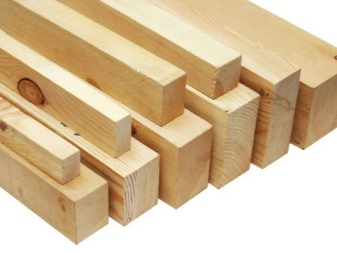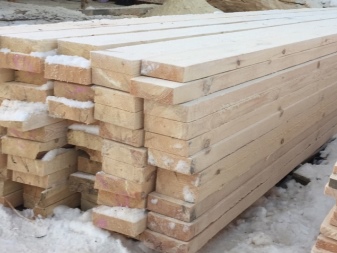All about rafter boards

Roof boards that support the roof covering are called rafters. It depends on them how long the roofing will last, as well as the safety of life in the house. In order for the rafters to turn out to be of high quality, it is important to choose the right material and make all the calculations.


Primary requirements
Edged boards with different sections are preferable for rafters. The most commonly used option is 50x150 or 50x200 mm. You should not take a rectangular or square beam, as it is too heavy and at the same time does not provide the necessary strength.
As a rule, on the roof, the rafters are installed on the edge for greater reliability. It is best to choose softwood for truss systems. This is due to the fact that the resin does not allow the formation of rot. In addition, coniferous boards are lightweight and affordable. Most sawmills offer a wide variety of this material.
It is important that the wood is not damp. Indeed, when dry, the geometry of the board and timber changes, which ultimately spoils the entire roof. It is desirable that the water content in the wood does not exceed 18%.


And you should also pay attention to the fact that the boards should be free of knots or rotten spots that could reduce strength. The rafters are strongly influenced by wind, snow and roofing, so there are many points to consider. For example, through cracks should be absent.


As for blind ones, only short ones are allowed. Boards for rafters must be treated with antiseptic agents against rot, fire retardants to protect against fire and agents for repelling various pests. This is necessary for the system to serve as long as possible.



Types of material
For a rafter structure, it is important to select boards so that it turns out to be strong, but at the same time its weight is not too large. Moreover, for the roof of multi-storey buildings or industrial buildings, metal or reinforced concrete rafters will be the best solution. For ordinary buildings, timber is sufficient. As a rule, in practice, it is customary to use several types of materials for rafters.
-
Logs are taken very rarely, more often they make log cabins. This option is heavy. In addition, you need a professional who knows how to work with them, in particular, with complex cuts in the places of fasteners.

- Beams for rafters can be used regular or glued. It is possible to make a system from it, which will be distinguished by high strength and durability. However, the cost of such material is high.

- The board has an acceptable cost, therefore it is often chosen for rafters. It is important that its thickness is at least 4 centimeters. Of the positive differences, it is worth noting lightness, ease of installation and a good margin of safety.

Dimensions (edit)
The parameters of the rafter boards can vary greatly. After all, this parameter is influenced by numerous factors. Among them are the dimensions of the structure, the roof area, the design option of the system, the expected loads from wind and other external influences. Experts recommend choosing a minimum section size of 50x100 or 50x150 millimeters. When creating large spans, the size should be 150x150 millimeters, and even better 250x100 millimeters. If the dimensions of the building are expected to be significant, then it is worth using boards with a minimum size of 200x50 mm, or even 200 by 200 mm.
To obtain the optimal dimensions of the rafters, some calculations should be made. In this case, it is important to find out the load that can affect the roof. Based on this, it will be possible to determine the cross section, as well as other parameters of the rafter system.
There are special norms, but they indicate the data without taking into account the climatic features of a particular region. Therefore, it is better to carry out the calculations yourself.


One of the most important parameters is the thickness of the rafter board. Indeed, the strength of the future structure depends on it. It is desirable that the thickness of the board is 40-60 millimeters. Moreover, for small buildings, a deviation of the indicator up to 5 mm is allowed. As for residential buildings, it is better for them to prefer boards with a thickness of at least 50 millimeters.
When choosing the width of the board, you should take into account the length of the span, which is covered by the rafters. The longer the rafters are, the wider the board should be. For example, if the rafters are 6 meters long, then the boards should be taken with a width of 150 millimeters or more. With a leg length of more than 6 meters, boards in width are selected starting from 180 millimeters. If the rafter leg is to be very long, extension is recommended.


To calculate the cross-section of the rafters, it is necessary to determine the appropriate distance between them, and take into account the length of the elements. In doing so, it is necessary to take into account the constant loads on the roof from snow and wind. The calculation will also include the mass of the rafter system, the angle of inclination of the ramp, the length of the span under the floors. Additionally, you should take into account the width of the structure itself.
To do all the calculations correctly and quickly, you can use special programs. In this case, the obtained values will be accurate. When the cross-section of the rafters is determined, you can proceed to finding their step. This definition refers to the distance at which the elements will be removed from each other. Such a parameter as a step is very important, since it ensures the reliability and service life of the roof.

System parts
The rafter system consists of trusses, which are flat structures in the form of a triangle. They are exposed to the Mauerlat, and then fastened together using girders. Several constituent elements of the farm can be distinguished.
- The rafters themselves are called rafters, on which the crate is attached, and the roof is laid. The truss consists of two beams, which are connected from above into a triangle. They should be tilted at the same angle as the roof slope.
- The tightening is a crossbar that interlocks the rafters horizontally, preventing them from moving apart under loads. Can often be seen on hanging systems.
- The crossbar is a beam that in the system is responsible for compression, and in appearance resembles a tightening. It is used for fastening beams at the top.
- The beams are connected horizontally with a grapple to increase the stability of the truss. It is used in layered rafters.
- The stand is used for additional support when fixing systems and is a horizontal beam.
- The brace is mounted at a specific angle and is used to provide better stability.
- Fillets are needed to lengthen the rafter legs if overhangs need to be made.

And there are also elements that do not belong to trusses, but are part of the rafter structure.
- The run in the form of a beam is installed along the ramps.
- The lathing is stuffed onto the rafters in order to mount the roof on it. Made from planks and beams.
- Mauerlat is mounted along the perimeter of the walls of buildings in the form of boards or beams. The lower ends of the rafters are attached to it.
- Lezhen lies along the inner walls of the building in order to mount the racks vertically on it.

How to choose
Boards should be chosen only from trusted sellers who can provide all the information of interest. It is important that accompanying documents with certain information are attached to the material:
- the type of wood from which the boards are made;
- standard number;
- the company that made the material;
- parameters of lumber;
- moisture content of the wood.
According to the type of wood for truss systems, preference should be given to conifers. The best option is larch, but you should take into account its rather large cost. Pine, cedar or spruce are suitable substitutes.
You should not choose hardwoods, as their wood is not as elastic. The only exception is oak, but due to its high cost, it is impractical to take it for rafters.



It is best to give preference to the forest, which is harvested in winter. The quality of such wood is higher than that harvested in the spring and summer months. For rafter legs, a bar with a thickness of 5 centimeters is suitable. As for the width, it depends directly on the design of the rafters and the load on them. Most often it is 10-25 cm. In this case, the length will be standard - 6 meters. It can be increased if necessary.
For purlins, it is better to use a beam with a thickness of 10 centimeters or more. A 15x15 centimeters board is suitable for the Mauerlat. It is worth noting that this element can be assembled from several boards to make it even stronger. For auxiliary parts such as struts, struts, puffs, fillies, you can choose a 5x10 centimeters bar. You can take a beam for rafters, but then the cost of such elements will increase. The lathing can be made from a board with a section of 2.5x10 cm.


You can buy boards in cubic meters, to order and in the form of a finished structure. Each option has its own characteristics.
- A cubic meter forest is suitable if you want to save money. There will be various materials in a large volume, so it is worth taking at least 10% with a margin. In this case, it is important to trim the boards, if necessary, remove the bark, treat with an antiseptic. You should choose only smooth materials so that they are not led.
- Custom planed boards will cost a third more, but exactly match the required dimensions. At the same time, there will be little waste. However, care must be taken that the wood is not damaged and that there are no defects on the canvases.
- Ready-made collapsible structures attract with the accuracy of measurements and ease of installation. Before their manufacture, the company sends a measurer who will take into account all the features of the project and wishes. As a result, the buyer will receive a competent and high-quality, but expensive system.
















The comment was sent successfully.